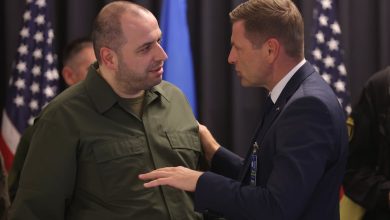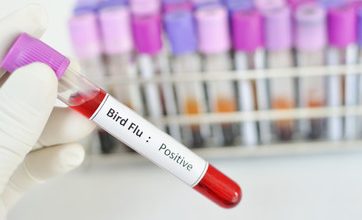Russia wants 2,600 satellites in orbit by 2036. Is this realistic?

MOSCOW — Russia wants have about 2,600 satellites in orbit by 2036, according to Yury Borisov, the head of the Roscosmos space agency.
Notably the country aims to put Sfera communications satellites into orbit — an analogue of the American-made Starlink and the British OneWeb constellations. Roscosmos previously sought to launch more than 600 systems into space as part of this project, but budget cuts prevented this. Now the agency is eyeing 360 satellites, although Borisov said the goal ought to be at least 1,200.
The government has agreed to approve 180 billion rubles (U.S. $2 billion) for 162 satellites. However, thus far the state has allocated 95 billion rubles, and a strategy meant to further develop the domestic communications sector up to 2035 calls for the launch of six geostationary satellites.
Sergei Prokhorov, who leads the Sfera project, recently said there is money set aside for four of them.
Is this practical?
While Borisov, who spoke July 3, is aiming for the production of at least 250 satellites per year for various purposes, the country currently makes about 15 annually — despite an existing capacity to manufacture about 40 each year.
Roscosmos’ goal is unrealistic, according to Pavel Luzin, a space policy expert at the Center for European Policy Analysis think tank. He noted the satellites will likely serve several functions, including optical observation, communications, meteorology, radar and television service.
“All the serious satellites that Russia has launched into space since 2022 were produced using imported Western electronics purchased no later than the mid-2010s, before the first sanctions,” Luzin told Defense News, referring to economic restrictions placed on Russia following its full-scale invasion of Ukraine.
“It turns out to be a fundamental contradiction: Russia has a big problem with satellite production, but at the same time Russia declares that in just a couple of years it will be able to produce [250] high-quality satellites for various purposes per year and is already mastering the technologies of their conveyor production,” Luzin said. “This simply does not happen.”
Russia can find components on the world market for the production of several satellites, but not enough to produce hundreds, Luzin added. “The heads of companies report that despite the sanctions, the industry is alive, although in fact they may not know where to get components for hundreds of satellites.”
Indeed, Borisov had said “industry is functioning relatively stably” amid the sanctions.
Amid the war, the state has adjusted its satellite production priorities, focusing heavily on dual-use satellites — that is, ones that provide military and civilian services.
Among its priorities are the optical reconnaissance satellite Razdan; a radar satellite for marine reconnaissance for the Pion-NKS constellation; two radar satellites, dubbed Obzor-R and Kondor; and several Glonass communications satellites.
Denis Banchenko, a former employee of Roscosmos, told Defense News that “a significant part of the planned satellites, and most likely all of them, will be used in the interests of the Ministry of Defence of the Russian Federation for intelligence, surveillance, navigation and communications purposes.”
Maxim Starchak is a Russia correspondent for Defense News. He previously worked as an editor for the Russian Defence Ministry and as an expert for the NATO Information Office in Moscow. He has covered Russian nuclear and defense issues for the Atlantic Council, the Center for European Policy Analysis, the Royal United Services Institute and more.







